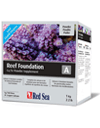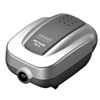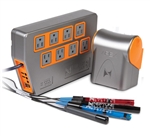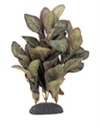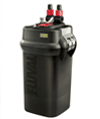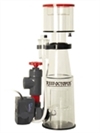Tank Turnover: How Much Do You Need and How To Get It

The Two Types of Tank Turn Over
Tank turnover can refer to two different things: the amount of water passing through the aquarium filter, and the amount of water circulation in the aquarium. The amount of water passing through the aquarium filter is sometimes called the tank turnover but we will refer to it as the filtration turnover for clarity. The amount of water movement inside of the aquarium is also referred to as tank turnover but we will refer to it as circulation turnover.
Filtration Turnover
Filtration turnover is measured in the number of times the entire water volume of the aquarium passes through the aquarium filtration every hour. If a 50-gallon aquarium uses a filter with a flow rate of 200 gallons per hour then the tank turnover is 4 times per hour. In general, the more water passing through the aquarium filtration the better the filter performs. But there are diminishing returns. We recommend a filtration turnover of 3-4 times per hour. Why? Because increased turnover really won’t remove much more waste. Four times an hour is 96 times a day. That’s plenty. More than that, you will just increase your electricity cost.
If you are planning to use a hang-on, internal, or all-in-one canister filter, we recommend purchasing a filter rated for your tank volume or one size larger (in case you overstock the aquarium). The manufacturers have already calculated the filter flow rates to be appropriate for the filtration volume they recommend. If you are using a sump or a canister filter that doesn’t include a pump, then select a pump that can turn over your aquarium’s water volume 3-4 times per hour.
Circulation Turnover
The second type of tank turnover is aquarium circulation turnover. Circulation is the amount of water movement inside the aquarium. Water movement is important in replicating the natural environments many fish and aquatic animals come from. Coral reefs have constant crashing waves and rivers and streams have continuous mass water flow. Water flow helps to give fish exercise and is an important part of the natural feeding behavior of many fish and filter-feeding invertebrates. It also helps to keep corals and water plants clean from debris and algae. Perhaps most importantly, water movement is critical to keeping the dissolved oxygen levels in the aquarium water at proper levels.
The goal with circulation turnover should be to replicate the natural environment the animals come from. For most freshwater aquariums no additional circulation-specific pumps are needed. The flow from the aquarium filter alone is perfectly adequate. If you have unique animals that come from high-flow areas, then 10 times circulation turnover per hour is normally sufficient. Pumps such as the Hydor Koralia work well provided they are properly sized.
In reef aquariums with live coral, water movement is critically important. Coral reefs have extremely high amounts of water movement, but it is not the same in every part of the reef. For Soft Corals and Large Polyp Stony Corals, a turnover of 20 times per hour is appropriate. For mixed reef aquariums with a variety of all types of corals, 30 times turnover is adequate. And for Small Polyp Stony aquariums 40-60 times turnover is not uncommon.
It is important to emphasize that the right amount of water flow for a coral is better evaluated by observing the coral and seeing how it is reacting to the water movement. If a coral is shrunken and the polyps are constantly closed, it is unhappy and this can be a sign of too much or too little flow. Corals that constantly have debris settling on them do not have enough flow. Our recommendations are generalizations to help you purchase properly sized flow pumps, but proper coral placement in relation to the pumps is also important.
Another factor with circulation turnover in reef aquariums is pump flow control. Controllable pumps include the Maxpect Gyre, Ecotech Marine Vortech, IceCap Gyre Pumps, Tunze Stream Pumps, OCTO Pulse Pumps, and Hydor Aqamai Pumps. These controllable pumps do not push water at a constant flow rate. Instead, these pumps vary their flow rate periodically to replicate tidal patterns, storm currents, and waves.
Because these pumps are not using their maximum flow most of the time, you will need to keep this in mind when calculating the actual amount of circulation. For example, though many Small Polyp Stony Coral aquariums should have a circulation turnover of 40-60 times per hour, the pumps are often capable of providing over 100 times turnover per hour. But because not all of the pumps are on at the same time, and the pumps are rarely at full power, the actual circulation turnover is in the 40-60 times per hour range for the majority of the day. This is the ideal scenario for water movement in the reef aquarium.
Purchasing controllable pumps capable of doubling your intended circulation turnover will allow you to dial the pumps down, and alternate between multiple pumps to best replicate natural ocean movement. For a budget solution, constant flow non-controllable pumps such as the Hydor Koralia pumps will work. Because these pumps can stay on all the time, you will not need to adjust for the pumps being off some of the time.
|







